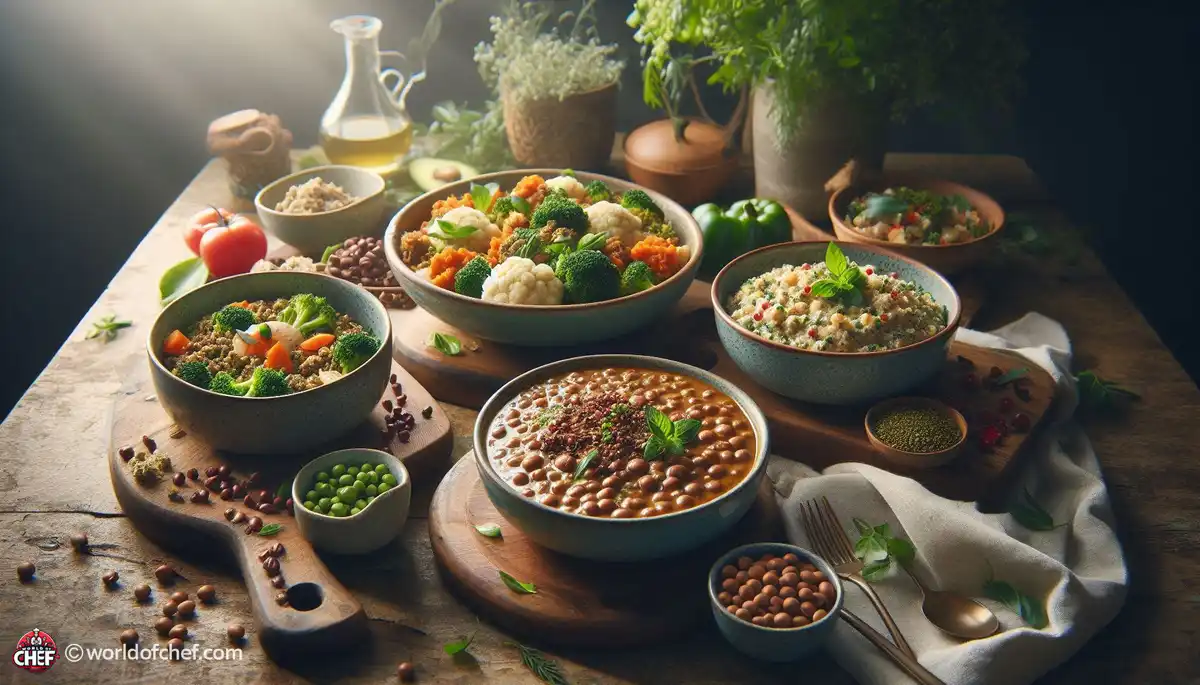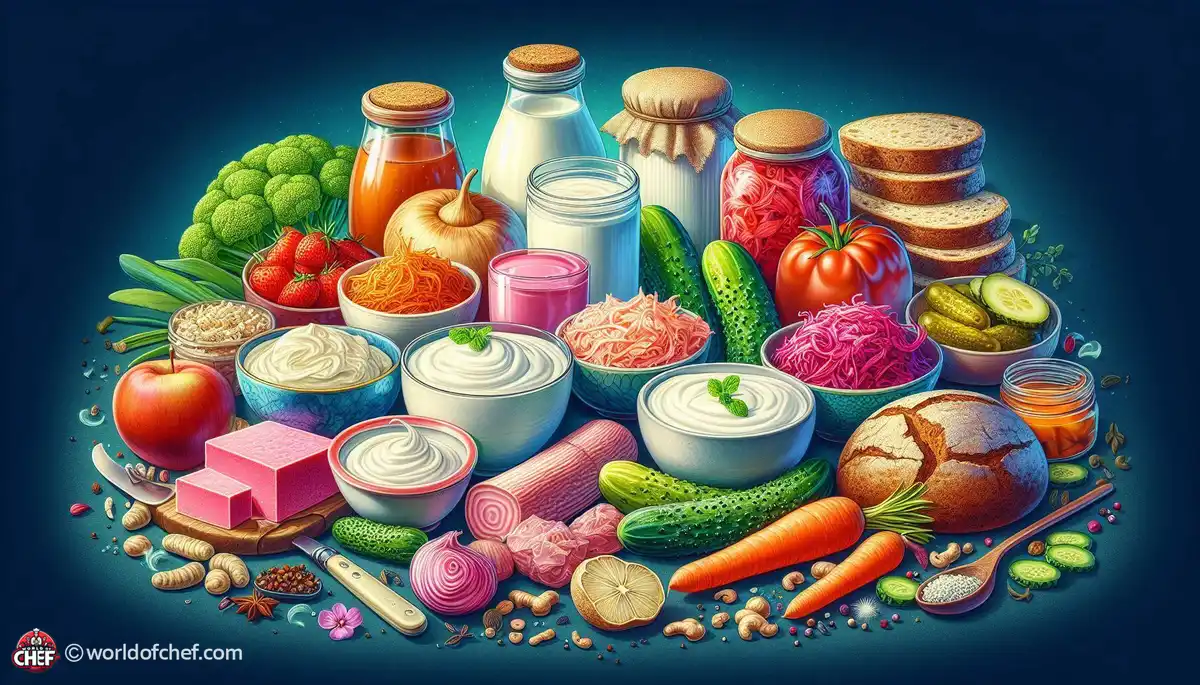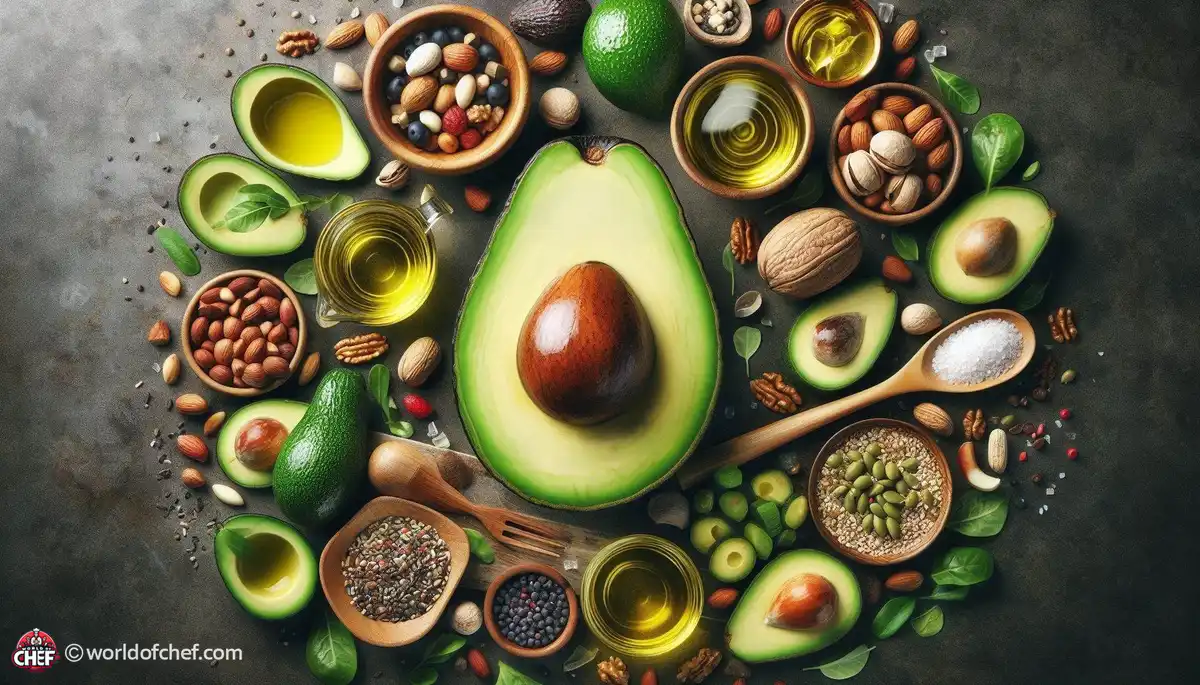
Dinner Delights: High-Fiber Recipes for Every Palate
Clarence Guido - Oct 7, 2024 - 7 min read


The general welfare is maintained by a healthy gut. A large family of bacteria, good and bad, exists in the gut microbiome living in our digestive tract. These friendly bacteria are called probiotics, which keep a balance in the microbial system. Probiotic rich foods can nourish that balance, contributing to healthier digestion, stronger immunity, and mental well-being.
Not a fad but more of a tradition practiced from ancient times in various places across the globe, probiotic foods have been prepared long before their Health Benefits can be recognized. For preservation and health, these fermentation processes have been employed to create nutritional powerhouses abounding with probiotics while using the power of bacteria naturally found in our earth.
In the fast-paced world today, our diets and lifestyles often leave our gut health compromised. Processed foods, antibiotics, stress, and other factors cause an imbalance in our delicate gut microbiome, leading to various health issues. On the other hand, the adoption of probiotic foods can be a proactive action toward restoring and maintaining healthy gut health, which precedes overall well-being.
One of the most widely used probiotics is yogurt, which is appreciated for its Creamy Texture and sour taste. Yogurt is prepared by fermenting milk for years, which makes it rich in beneficial bacteria like Lactobacillus bulgaricus and Streptococcus thermophilus. Probiotics in yogurt have been used to regulate digestion, increase the strength of the immune system, and even the health of the skin.
Of course, plain, unsweetened yoghurt is the purest form of the deal when it comes to delivering probiotic benefits; the varieties are endless for sensitive taste buds. It also has Greek yoghurt, which is strained till it's thicker, and therefore richer in protein. There is all this dairy-free variation, including coconut or almond milk. All you have to watch out for is if this contains live and active cultures so that you will really be getting the full level of probiotic activity.
The elegance of yogurt is that you can easily add it into your day-to-day life and snacking. Eating it by itself with some honey drizzle and tossing some nuts or seeds atop is a very satisfying way to start your day, or as a snack when you need it. Let it be a base for making a smoothie or some salad dressing, or a component in baked goods when you want something moist but also probiotic.
Kimchi is the staple dish of Korea, made out of spicy fermented cabbage. It's very unique in its taste as well as very healthy to eat. So this side dish has much more to offer than one may imagine. From the contents of probiotics, vitamins, and antioxidants, it does support health for gut, heart health, boosts immunity, and aids in weight management.
The preparation of kimchi has always involved elements of both art and toil. This plain and old-age recipe, that ferments Napa cabbage in the mixture of garlic, ginger, chili peppers, and salt. As a swarm of bacterial agents such as Lactobacillus plantarum thrives, it becomes naturally acidic and, on the points of gut's health concerns, highly favorable as an accompaniment. Serving Kimchi
The strong pungent flavors characterise this food product, while versatility defines its taste. Taste kimchi as a side dish over rice or noodles or add it to soups, stews, and stir-fries for that punch of probiotic flavor. Mix it and match it for something altogether different: put kimchi in tacos, sandwiches, even grilled cheese for that infusion of cultures and flavors.
Known recently as a hip health beverage, fizzy fermented tea is called kombucha. The SCOBY (symbiotic culture of bacteria and yeast) in this fermented tea is valued for its probiotics, refreshing fizziness, and other uses.
Store-bought kombucha is easily within reach for most people; however, brewing at home allows for individualization and creativity in flavors. It's possible to create your own probiotic-rich brewings using simple ingredients, a little time, and patience, and then trying the perfect ginger, berry, or herb flavor that tickles your taste buds.
Whether you drink kombucha as a refreshing brew on its own or dilute it with other mixer drinks and mocktails, it gives a sour punch to any drink. Take a glass of kombucha to start your day filled with probiotics, or drink it all day, replacing sugary sodas and juices.
An emerging probiotic food, sauerkraut is a fermented form of cabbage, commonly used in Germany as a topping for hot dogs and sandwiches. Upon salting the cabbage and letting it ferment, beneficial Lactobacillus bacteria multiply to produce this condiment.
Aside from the probiotic aspect, sauerkraut also contains lots of vitamins C and K, in addition to high amounts of fiber, which makes it a nutritious addition to any diet. The acidity adds body to food and, along with its probiotic activity, promotes gastrointestinal health and eases digestion while even supporting reduction of inflammation.
Sauerkraut is a classic topping for hot dogs and bratwurst but can be used in much more creative ways. It can be added to salads, sandwiches, or grain bowls for crunch and zest, or incorporated into savory pancakes or fritters to create unique versions of the old standbys.
Tempeh: This is a traditional food of Indonesia that has gained popularity for the past years due to its being a plant-based protein source with added probiotic benefit. During fermentation, soybeans are inoculated with a specific mold called Rhizopus oligosporus. In this process of fermentation, the soybeans get bound together into a firm cake-like texture.
Tempeh is rich in protein, fiber, and many other nutrients. Among its nutrients are iron, calcium, and B vitamins. It has a nutty flavor and a firm texture, making it easy to use in a wide variety of vegetarian and vegan dishes. It readily takes on the flavors of marinades and seasonings.
From stir-fries and salads to sandwiches and tacos, tempeh can be used in all kinds of dishes as plant-based protein with probiotic goodness. Marinate in your favorite sauces or spices before grilling, baking, or pan-frying for a deliciously satisfying meal that is gut-friendly and nourishing to the body.
Miso is a fermented savory paste made of soybeans, salt, and koji. It varies in color and flavor; it can be white, red, and all those colors in between. Its use is highly versatile for adding depth and umami to soups, marinades, dressings, and much more.
Miso is rich not only in probiotics but also in enzymes and vitamins B and K, apart from having a great taste. Fermentation helps digest the nutrients better, thereby improving their absorption; whereas probiotic properties ensure one's gut health is great and immunity is higher.
Miso can be used in a thousand and one more recipes beyond the traditional soup. Mix it into salad dressings or marinades for a savory kick or as a base for glazes and sauces to add depth of flavor to meats, seafood, and vegetables. Use different varieties to discover new taste sensations and reap the probiotic benefits.
Pickles are fermented cucumbers in brine or vinegar. They are the world's most popular snack and condiment. Although commercially available pasteurized pickles do not have live bacteria, their homemade version is chock full of probiotic bacteria that improve intestinal health.
Pickles have a lot of probiotics in them, but are low in calories and full of vitamin K and antioxidants. Crunchy and sour, pickles are very satisfying to eat on their own or as a condiment for sandwiches, burgers, and salads, but the probiotic properties assist with digestion and a healthy gut microbiome.
Although convenient to buy pickles in a store, making your pickles at home allows you more control over the ingredients and the fermentation process. You only need cucumbers, salt, water, and spices to make very delicious pickles rich in probiotics and free of artificial additives and preservatives.
Traditional buttermilk is the liquid that is left behind when butter has been churned from cream. It is a probiotic drink that tastes tangy and is creamy to the palate. Unlike cultured buttermilk, which is produced by fermenting milk with lactic acid bacteria, traditional buttermilk is usually byproduct when making butter.
High in probiotics, vitamins, and minerals, traditional buttermilk is full of health benefits-from digestive improvement to strengthened immunity and bone health. Its tangy flavor makes it popularly consumed worldwide; either on its own or used for cooking and baking.
Whether over ice on a hot day or used as a base for smoothies, soups, and salad dressings, traditional buttermilk adds a creamy tang to any dish. Use it to tenderize meat or poultry in marinades, or incorporate it into baked goods for added moisture and a subtle tangy flavor that complements sweet and savory recipes alike.
Incorporating probiotic-rich foods into your diet is a delicious and nourishing way to promote intestinal health and overall wellness. From yogurt and kimchi to kombucha and miso, the world of probiotic foods offers many flavors and benefits for trying. Nourishing this gut microbiome through those fermented delights can help someone cultivate a healthier digestive system, improve their immunity, and ultimately live a more happy and healthy life. So go ahead, indulge in these probiotic powerhouses, and let your gut thank you for it!

Clarence Guido - Oct 7, 2024 - 7 min read

Lydia Timmerman - Oct 6, 2024 - 6 min read

Logan Trowbridge - Oct 6, 2024 - 7 min read

Wayne Tobar - Oct 4, 2024 - 8 min read